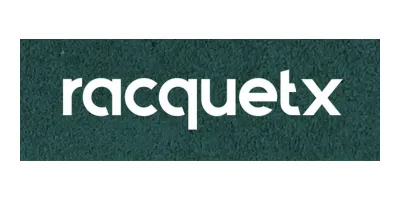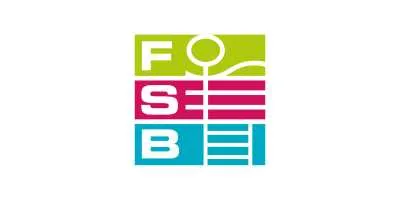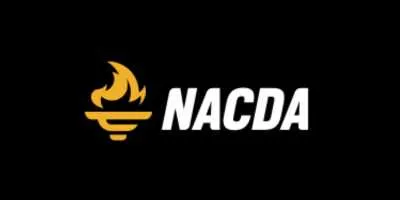Home » Artificial Turf Maintenance » Artificial turf field repair tips and cost considerations

The cost of repairing your artificial turf depends on a few factors. Like when you are pricing out your installation, you’ll need to determine your exact requirements before you can hone in on a price.
- Area and size of the repair
A single section of loose turf will be much cheaper to repair than rips and tears throughout the field.
- Will you need a replacement tile
In some cases, the section of turf may be unsalvageable. Therefore, you’ll need to purchase a new section of turf to glue down and replace the existing area.
- Work hours and labor
Whether you are working on your repairs with an in-house team or outsourcing the procedure to a professional, you’ll need to pay for labor. If your team is inexperienced, you may end up paying for more hours than you would if you outsourced.
Use our artificial turf field maintenance cost calculator to get a breakdown of turf field maintenance costs for your project.
Why artificial turf field repair is essential
No matter how well you maintain your artificial turf, there’s going to come a time in its lifespan when you need to repair it. Now, with a natural grass field, that means installing new sod or planting more grass. With a synthetic turf field, repairs may be less frequent but they can be more tedious and involved.
Although repairs can take time, they are essential to keeping players safe. After all, you want to keep all performances at a high standard and the aesthetic of your field looking its best for athletes and spectators alike.
Luckily, with our tips for artificial turf field repairs, you can better understand the equipment needed to repair both minor and significant damage to your field.

When is it time to get your turf field repaired?
One of the significant benefits of artificial turf is its durability. When installed correctly, synthetic fields can be nearly indestructible. That means your school, athletics club, or community teams can be free to dive, tackle and slide across it without impacting its performance.
However, one thing beyond your control can impact its overall condition: the weather.
The elements can significantly affect the synthetic materials for outdoor artificial turf fields. Fluctuations in the temperature and exposure to precipitation can shrink and expand the field. This causes it to stretch, contract, and become distorted over time. Shifts in the surface can impact play performance and lead to injury.
In addition to the weather, years of use from your athletes will slowly cause deterioration of your field’s surface. It is imperative to perform regular inspections of your turf field to identify areas that may need repairs or even complete replacement.
Some typical signs that your field needs to be repaired are:
- Rips in segments that expose the underlayer
- Buckling or bubbling near seams
- Weak spots
These signs are most common in high-traffic areas. Depending on the sports played on your field, the most traveled zones will vary. Therefore, you’ll want to pay extra close attention to where players are spending most of their time.
To help you better understand sport-specific high-traffic areas, here is a list of common repairs we see by use case:
For football, lacrosse, and soccer fields:
- Hash marks and numbers
- Seams
- Logos
- Lacrosse circles
- Penalty kick areas
- Goal and corner kick circles
- Team dugouts
- Players’ warm-up areas
For baseball and softball fields:
- The batter’s box
- The catcher’s box
- Pitching mounds
- On-deck circles
- Sliding areas (don’t forget the outfield!)

Doing repair tasks in-house vs outsourced
Now that you know what to look for and where to focus your attention, it’s time to understand how to repair turf. While it may seem daunting at first, it can be a relatively straightforward process as long as you know what to do and where to start.
For any repair of your artificial turf, there are two possible approaches.
- Partner with a professional
- Do it yourself
Hiring Experts
While small patches and repairs may be easy for your team to handle, expert help may better suit other larger projects. We know how important it is to save money, especially when your school is on a tight budget.
However, partnering with an expert maintenance and repair specialist will help you save money in the long run. By ensuring your repairs are done right and will withstand the pressures of everyday use.
DIY Repairs
If you and your maintenance team are up to the task, or if the repair task is urgent, you can repair damaged artificial turf.
To get started on a simple repair of loose turf, you’ll need a few pieces of equipment and supplies:
- Turf glue
- Turf glue gun
- Handheld vacuum
Once you’ve identified the problem area, you can use suction to remove loose fibers or infill beneath the surface. This helps provide a clean plane to apply the glue.
Next, insert the turf glue into the gun and apply it beneath the lifted surface. Use a liberal amount to ensure the best coverage for your turf.
Slowly lower the section of turf onto the glue and apply pressure. Most adhesives will dry within 30 – 45 minutes of application. You’ll want to perform your repairs on an off day or when you have ample time in between events. Making repairs during the downtime will help your repair last and keep your athletes as safe as possible.
Not sure where to get your equipment? A fool-proof solution is an artificial turf repair kit. These kits come with everything you need to repair. Most even come with rubber gloves to keep your maintenance team safe when applying the turf glue.

Why you might consider hiring an artificial turf repair company
For most facilities, hiring an artificial turf repair company is the perfect solution to fixing issues with the field.
Before diving in on your own, carefully weigh your options and consider everything you’ll need to complete the job successfully.
Do you have the know-how and experience to complete the repair?
If your team lacks training or the job is too complicated for their skill set, you may want to hire a professional. An imprecise repair can lead to major headaches down the road. You’ll want to make sure your repair is done right the first time.
Do you have the necessary equipment and tools?
Artificial turf repair kits are an excellent solution for small jobs. But if you are looking to repair high-traffic areas or large swaths of surface, an outside professional may be the answer. They’ll have everything needed to finish the job – and they’ll do it efficiently and expertly.
Hiring a full-service team that performs a turf field maintenance program can significantly benefit your venue. Before they become problems, they’ll spot potential issues, keep the surface clean from debris with routine cleanings, and perform repairs quickly. You’ll be able to maximize your field’s useability and keep athletes running, sliding, and tackling.
We know not every budget can afford outside contracting help. If that’s the case, your team can certainly do repairs in-house.
It just requires having the necessary tools and knowledge. There are many resources available online that describe the repair process in detail. You might even reach out to a local expert for a consultation,
Whichever path you choose, be sure to weigh both the short-term and long-term budgetary impacts. While paying a little more upfront may be difficult, it will help you save time and money in the future.
Get a cost estimate for repair & maintenance
We work with some of the leading turf field repair and maintenance companies in the United States. Our team has developed an easy-to-use calculator to help you get an accurate estimate of the potential costs of a repair.
Use our artificial turf field maintenance cost calculator here, and we’ll put you in touch with a professional artificial turf repair company in your area.











